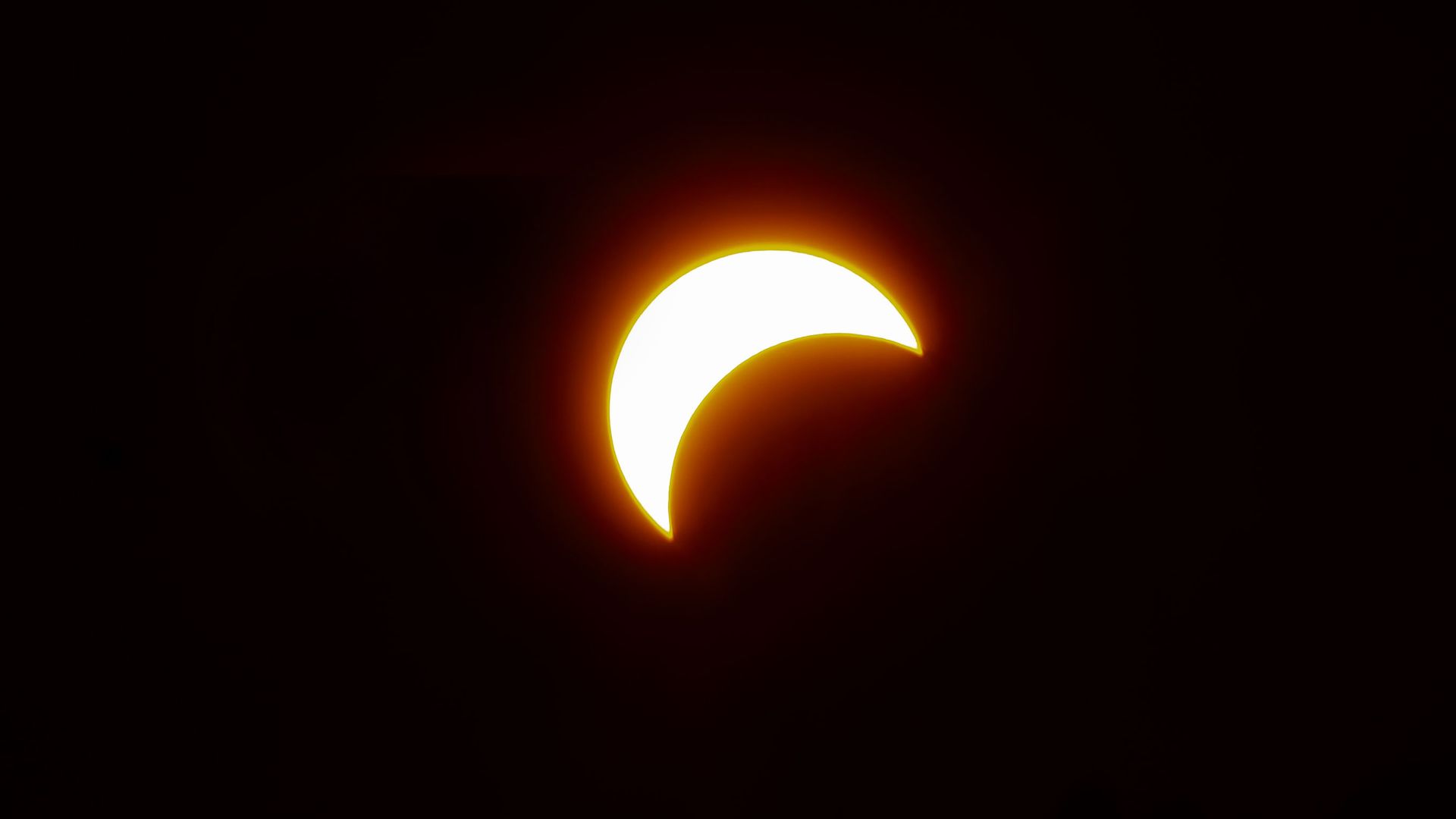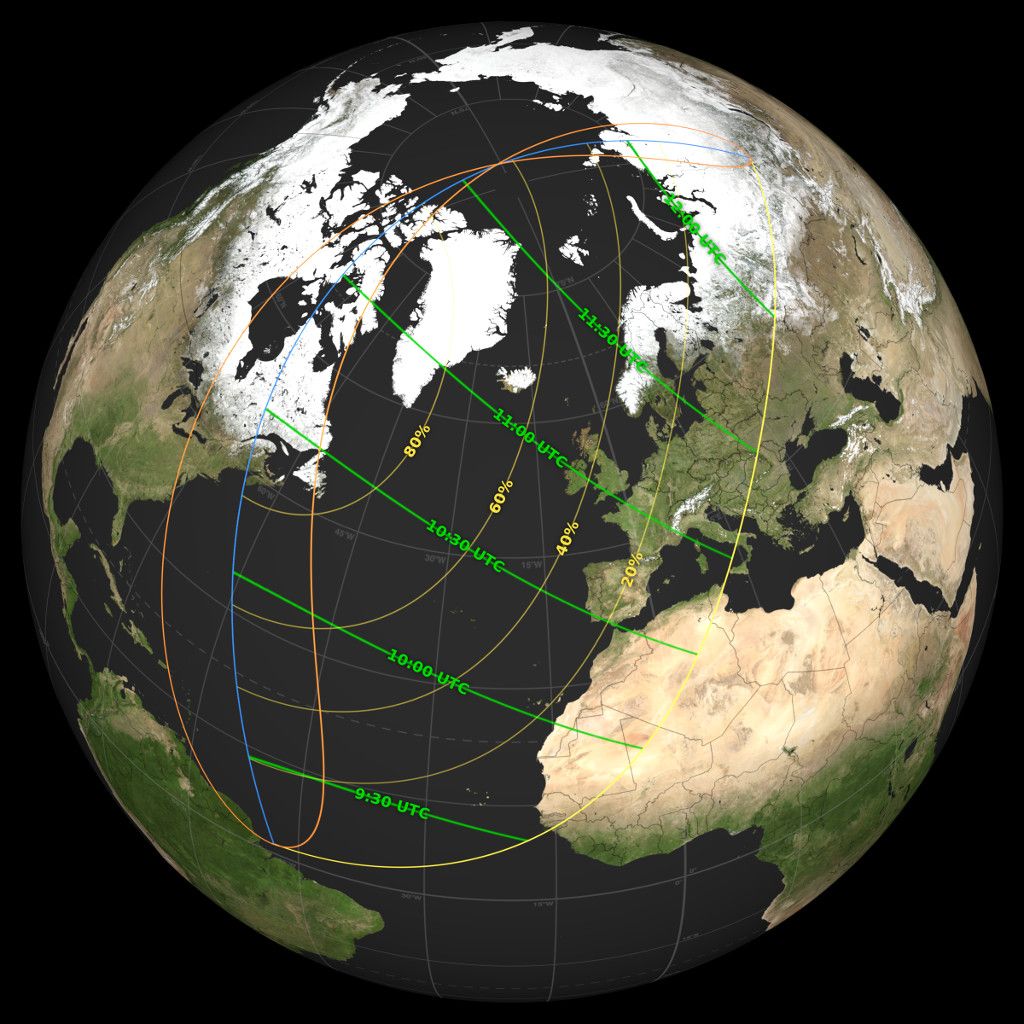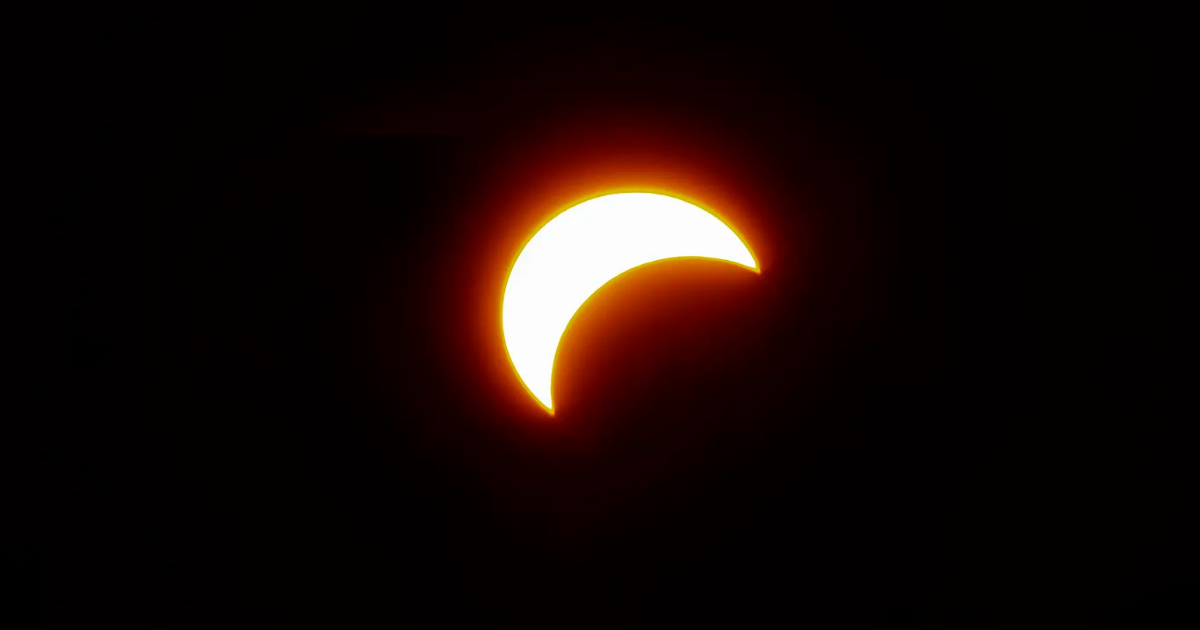
Saturday’s partial solar eclipse offers the rare chance to see a “double sunrise” in the northeastern part of the country.
Why it matters: It’s the only solar eclipse visible from the U.S. this year and comes two weeks after the total lunar eclipse.
- 814 million people around the globe will be able to see part of the eclipse, which is nearly 10% of the world’s population.
A partial solar eclipse happens when the Moon passes between the Sun and Earth but the three don’t perfectly line up.
- With a partial eclipse, only a part of the Sun will appear to be covered, which gives it a crescent shape.
What we’re watching: For the March 29 eclipse, NASA says the Moon will pass in front of and partially block the Sun, casting a shadow on parts of the Northern Hemisphere.
Eclipse path: Where to see the partial solar eclipse
The big picture: It depends on where you’re located — and if the weather cooperates — but parts of 13 states will see the eclipse in some form.
- Coastal New England is expected to get the best views, per LiveScience.com.
- In Maine, up to 86% of the Sun will appear eclipsed as it rises.
- Up to 57% of the Sun will be eclipsed in New Hampshire and 55% in Massachusetts.
Zoom out: In addition to parts of the U.S. and Canada, the eclipse will also be visible in parts of Europe, Africa, northern Asia, small parts of South America, throughout Greenland and Iceland, as well as much of the Atlantic and Arctic oceans, NASA said.
What time is the solar eclipse Saturday?
Zoom in: NASA says the partial eclipse is set to begin before sunrise in the U.S. and Canada on Saturday, March 29. The times listed on NASA’s website are for sunrise. They include:
- Baltimore: 6:55am to 7:02am, with 3% coverage
- Boston: 6:31am to 7:07am, with 43% coverage
- Buffalo: 7:02 to 7:09am, with 2% coverage
- New York City: 6:44am to 7:04am, with 22% coverage
- Philadelphia: 6:49am to 7:03am, with 12% coverage
- Portland, Maine: 6:27am to 7:10am, with 64% coverage
- Washington, D.C.: 6:56am to 7:01am, with 1% coverage
Between the lines: In western Europe and northwestern Africa, the eclipse will begin in the mid- to late morning, NASA said.
- In eastern Europe and northern Asia, most or all of the eclipse will occur in the afternoon or early evening.
Yes, but: TimeandDate.com lists additional times the partial eclipse starts and ends in the U.S.
 A global map of the shadow path for the March 29, 2025 partial solar eclipse. Image: NASA’s Scientific Visualization Studio
A global map of the shadow path for the March 29, 2025 partial solar eclipse. Image: NASA’s Scientific Visualization Studio
What is a double sunrise?
The intrigue: Since the Sun is rising at the time of the eclipse in the U.S., some will see the illusion of a “double sunrise.”
- From some locations, the Moon’s silhouette will make the rising Sun appear like it has two horns, according to LifeScience.com.
- Space.com says for coastal locations in northern Maine, New Brunswick and Quebec, it may be possible to see “devil’s horns” when the eclipsed Sun rises.
Watch eclipse live online on YouTube
TimeandDate.com will have a livestream starting at 5:30am EDT on its website and YouTube channel.
Eclipse glasses: Do not look directly at Sun
Threat level: While the partial eclipse is brief, staring straight at the Sun during it can cause permanent damage if you don’t wear the right protective eyewear like eclipse glasses or a pinhole camera.
- “Except during the brief total phase of a total solar eclipse, when the Moon completely blocks the Sun’s bright face, it is not safe to look directly at the Sun without specialized eye protection for solar viewing,” NASA warns.
- Staring straight at the Sun during partial and annular solar eclipses can cause permanent damage to the retina, according to the American Astronomical Society.
More from Axios:
